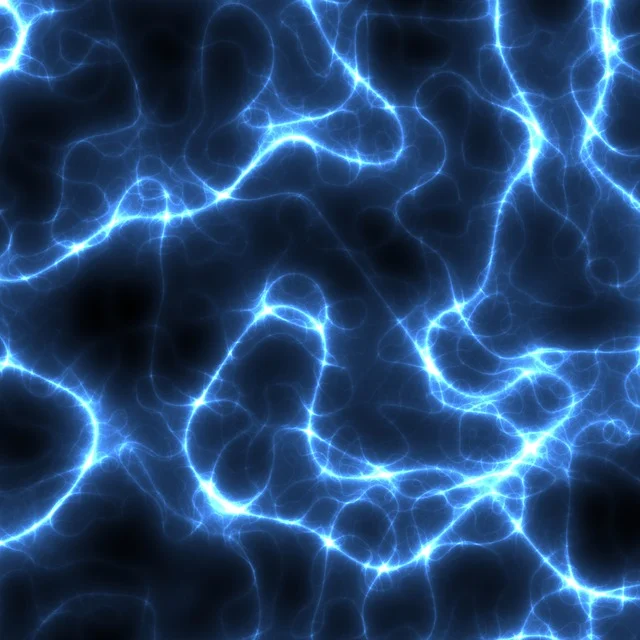In physics, energy is not just stored in visible or tangible objects it can also be stored in invisible fields. One such invisible storehouse is the electric field. Whenever there is an electric field present in a region of space, it can store energy.

This stored energy is an important concept in electrostatics and is particularly useful when studying capacitors, transmission lines, and electromagnetic waves.
The energy density of an electric field is the amount of electric energy stored per unit volume in the space where the field exists. This concept tells us how “energetic” a particular region of the electric field is and helps in understanding how energy is distributed in systems connecting charges.
Concept
An electric field is created when charges are present, or when a voltage difference exists between two points. The strength of the electric field is denoted by E (measured in volts per meter, V/m).

When we establish an electric field such as between the plates of a capacitor work must be done to move charges and maintain that separation. This work does not disappear; it is stored as potential energy in the electric field.
If we want to know how much energy is stored in a particular volume of space, we calculate the energy density.
Derivation of Energy Density Formula
A Simple system a parallel plate capacitor to derive the expression for energy density.
Step 1: Energy stored in a capacitor
The total energy U stored in a charged capacitor is given by:
U = 1/2CV2
Where:
C = Capacitance of the capacitor
V = Potential difference between plates
Step 2: Capacitance of a parallel plate capacitor
For a parallel plate capacitor:
C = €0A/d
Where:
€0 = Permittivity of free space
A = Area of each plate
d = Separation between plates
Step 3: Relation between electric field and potential
The electric field E between the plates is:
E = V/d
or V = Ed.
Step 4: Substituting values
Putting C and V into the energy formula:
U = 1/2 . €0A/d . (Ed)2
U = 1/2 . €0AdE2
Step 5: Energy density
Ad is the volume between the plates. Therefore, the energy density uE is
uE = U/ Volume = 1/2 €E2
Why is Energy Stored in an Electric Field?
Whenever charges are arranged in space, they influence each other through electric forces. Bringing charges together (or separating them) requires work against these forces. This work is not lost it gets stored as potential energy in the system, and we can think of this energy as being “spread out” in the electric field itself.
Example:
In a capacitor, when we apply a voltage, we move charges from one plate to the other. The work done to move these charges is stored in the form of energy in the electric field between the plates.
This energy can later be used to do work like lighting a bulb briefly when the capacitor discharges.
Mathematical Expression
The energy density uE is given by:
uE = Energy stored in the field / Volume occupied by the field.
From the derivation of energy stored in a capacitor.
U = 1/2CV2
Where:
* U is the total energy stored,
* C is capacitance,
* V is the potential difference.
For a parallel plate capacitor:
C = €A/d
Where:
€ = permittivity of the medium,
A = plate area,
d = distance between plates.
Also, the electric field E is
E = V/d
Substituting these into the energy expression:
U = 1/2 . € A/d . (Ed)2
U = 1/2 € E2 (Ad)
Here, Ad is the volume between the plates. Therefore, the energy density uE is:
uE = U/Volume = 1/2 € E2
Interpretation of Formula
€ (permittivity) tells us how much the medium affects the field. Higher permittivity means more energy can be stored for the same electric field strength.
E2 shows that the energy density grows rapidly with stronger fields.
The 1/2 factor comes from integrating the work done to increase the field from zero to its final value.
Units and Dimensions
SI unit: Joule per cubic meter (J/m³).
Dimensions: [M1 L-1T-2] (same as pressure interestingly, electromagnetic energy density can be thought of as a kind of “field pressure”).
Physical Meaning
The formula tells us that energy is not just stored in the material objects (like the plates of a capacitor), but in the space between them in the electric field itself. This is why even in vacuum, where no matter exists, a strong electric field still “contains” energy.
Applications
Capacitors– The energy density formula helps engineers to design capacitors with desired energy storage capacity.
Electromagnetic Waves– In light waves, the electric and magnetic fields both store energy; understanding the energy density is essential for calculating wave power.
Dielectrics – When a dielectric is inserted into a capacitor, the permittivity changes, and thus the energy density changes.
High-voltage Engineering – Predicting breakdown strength of materials depends on how much energy per volume the electric field holds.
Medical Applications – In devices like defibrillators (A defibrillator is a medical device used to restore a normal heartbeat by delivering an electric shock to the heart.
